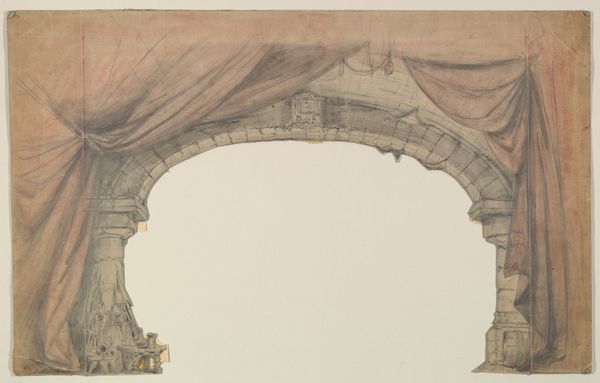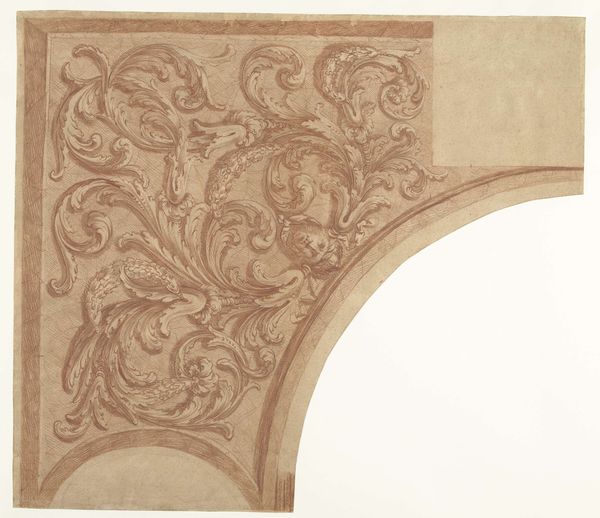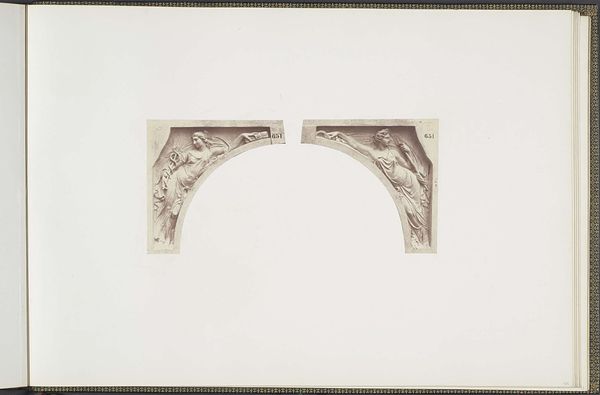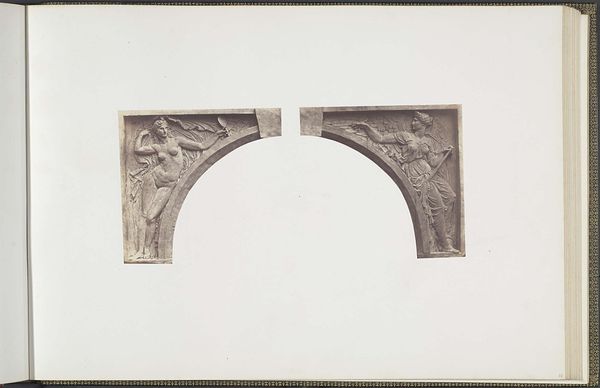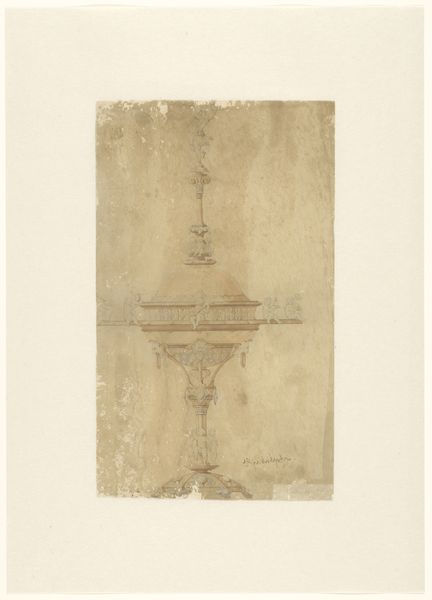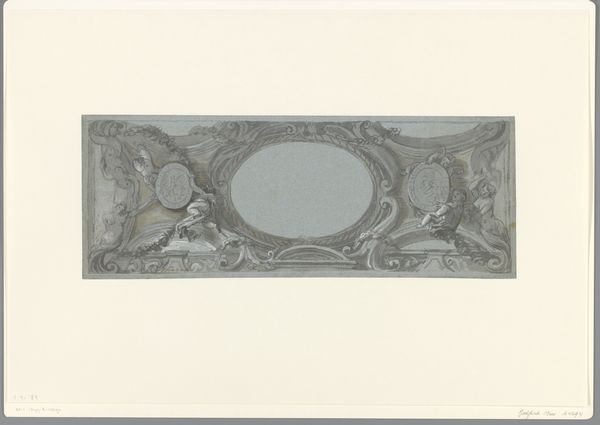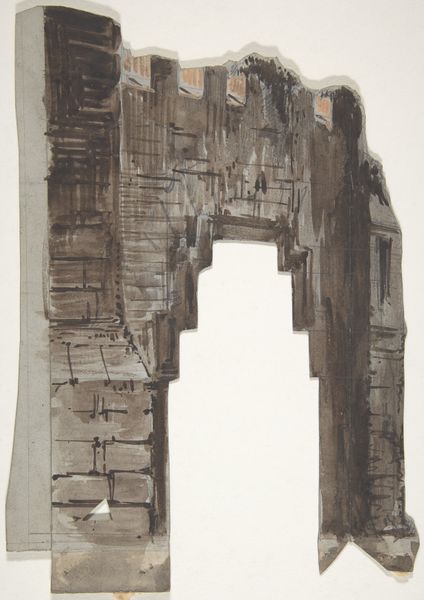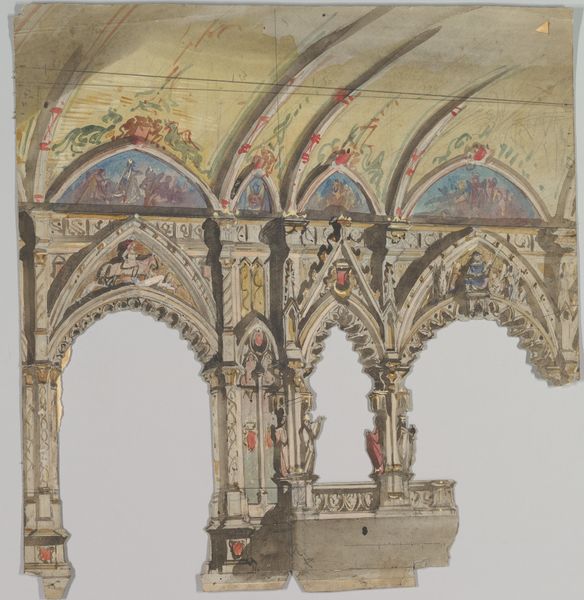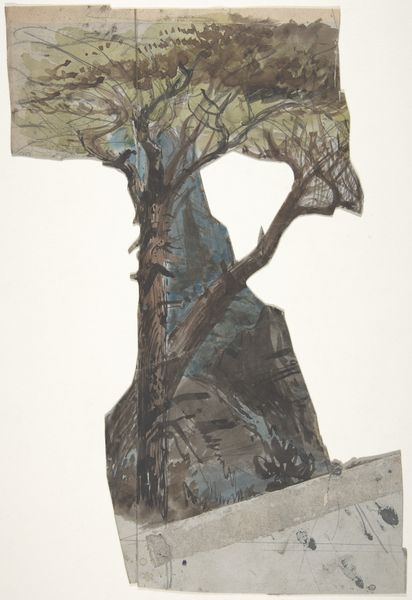
Design for a Stage Set at the Opéra, Paris 1828 - 1890
0:00
0:00
drawing, print, watercolor
#
drawing
# print
#
perspective
#
watercolor
#
cityscape
#
academic-art
#
watercolor
Dimensions: Irregular sheet: 12 3/4 x 20 13/16 in. (32.4 x 52.9 cm)
Copyright: Public Domain
Curator: Let’s spend a moment examining Eugène Cicéri’s "Design for a Stage Set at the Opéra, Paris," created sometime between 1828 and 1890, using watercolor and ink. What's your first impression? Editor: The architecture feels both grand and ruined. The watercolor lends a ghostly quality to the decaying archway. There's something poignant about the juxtaposition of faded elegance and the suggestion of structural collapse, especially considering it’s intended as stage design. Curator: Precisely. Cicéri, as a prominent stage designer, understood the power of visual cues to evoke specific emotions and transport audiences. Here, he uses the symbolic weight of architectural elements—archways as gateways to the unknown—to build dramatic tension. Consider how the lush overgrowth hints at time and neglect, obscuring the clarity of purpose. Editor: It makes me think about how opera itself often dealt with themes of decline and the fall of empires. The crumbling grandeur could represent the societal anxieties of the 19th century. Is Cicéri commenting on the perceived decay of traditional European power structures through this design? The placement of nature reclaiming man-made structures could suggest the impermanence of power. Curator: Absolutely, it introduces an interplay between civilization and nature, hinting at a recurring motif where nature, with its inherent strength and cycles of renewal, might just outlive the ambitions of humankind. Notice too the religious symbolism in the artwork behind the overgrowth on the arch’s left side, referencing cultural memory and religious beliefs tied to authority. It makes one think of the complex relationships of power at the time in French society, which often led to turmoil. Editor: This is what makes art history so engaging. It shows us that design isn’t just about aesthetics; it’s about reflecting and even shaping cultural conversations. To view this piece is a brief historical inquiry of shifting artistic styles and techniques, reflecting a broader dialogue about identity, gender, race, and politics of its time. Curator: Indeed, and I find that examining stage design provides an especially unique lens through which we might view the theatrical constructs of history. Editor: Thank you, that’s certainly given me more to consider about how scenic design mirrors our socio-political landscape.
Comments
No comments
Be the first to comment and join the conversation on the ultimate creative platform.
